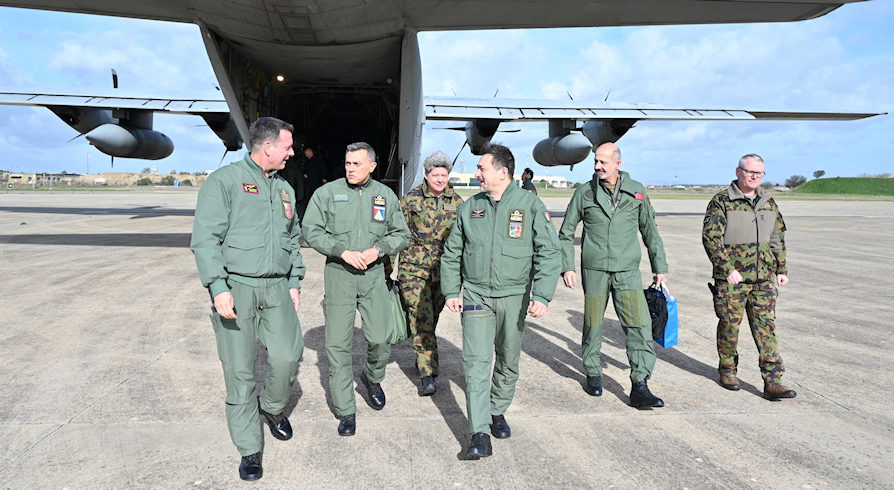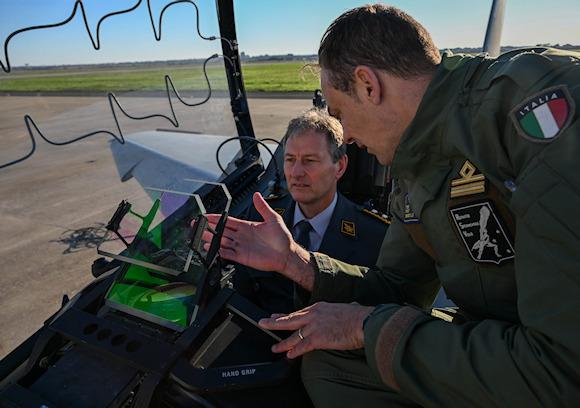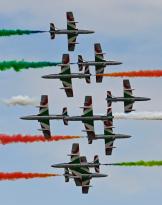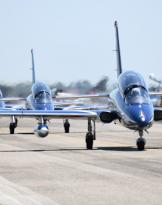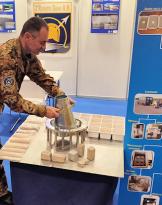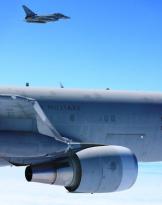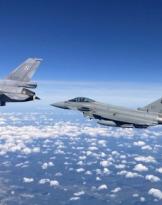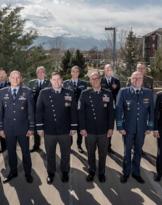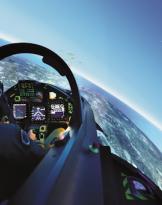On 22 and 23 January, a working visit took place in Italy between representatives of the top management of the Air Force and the Swiss Air Force to discuss the main themes that characterize bilateral cooperation in the aeronautical sector.
On this occasion, the Chief of Staff AM Air Force General Luca Goretti received the Swiss delegation led by his counterpart, Major General Peter Merz. The visit is part of the strengthening of bilateral relations, already based on close cooperation in the operational, training and exercise sectors. The discussions focused on training and increasing the level of interoperability, also in view of the transition in the coming years of the Swiss Air Force towards a 5th generation air capability, with the entry into service of the F-35A aircraft in starting from 2027. The future commonality of aircraft creates, in fact, immediately, numerous opportunities to further strengthen collaborative paths between the air forces of two neighboring countries.
In order to delve deeper into issues of common interest and show the excellence of the AM in specific sectors, the program included the carrying out of two fact-finding visits to some departments of the AM.
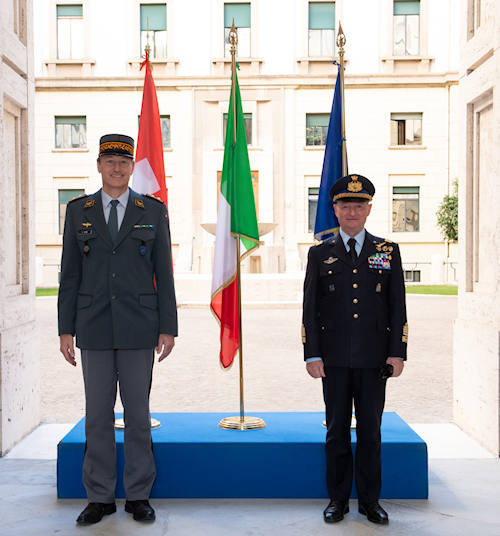 In the afternoon of the first day, the delegation, accompanied by Air Brigadier General Roberto Del Vecchio, visited the air division of aeronautical and space experimentation (DASAS) of Pratica di Mare where she was welcomed by the air division general Alessandro De Lorenzo. The event made it possible to illustrate the capabilities of the dependent departments, providing an overview of the main programs and study, experimentation, testing and support activities for the research of new aeronautical and space systems and materials, also launched in synergy with other research centers national and international.
In the afternoon of the first day, the delegation, accompanied by Air Brigadier General Roberto Del Vecchio, visited the air division of aeronautical and space experimentation (DASAS) of Pratica di Mare where she was welcomed by the air division general Alessandro De Lorenzo. The event made it possible to illustrate the capabilities of the dependent departments, providing an overview of the main programs and study, experimentation, testing and support activities for the research of new aeronautical and space systems and materials, also launched in synergy with other research centers national and international.
On January 23rd the visit to the “MO Giovanni Farina” military airport in Decimomannu took place. The delegation was received by the commander of the experimental and standardization air shooting department (RSSTA) Colonel Federico Pellegrini, by the commander of the Salto di Quirra Joint Forces Experimental and Training Polygon (PISQ) Air Brigadier General Davide Marzinotto and the chief of staff of the command of the AM/3rd air region schools, Air Brigade General Edi Turco. The event made it possible to present the training program for the training of Stage IV of military pilots at theInternational Flight Training School (IFTS) and the innovations implemented for advanced and multi-domain training within the OTI program (Operational Training Infrastructure). Together with a visit to the IFTS campus and a general briefing on the aforementioned initiatives and their synergies, General Merz took part in a training mission on board the T-346 aircraft supplied to the 212th flight group, in order to directly appreciate and in person the extraordinary flight performance of the aircraft and the innovative training peculiarities of the interaction between the flight mission and the integrated simulation ground systems.
Overall, the meeting represented an opportunity for a fruitful exchange of views and information between the two Air Forces. The proposals put forward by both parties, for ever closer cooperation in specific sectors, consolidates the position of the AM at the international level as a point of reference and provider for education and advanced training. Before restarting, General Merz wanted to thank the Italian authorities for the climate of profound collaboration and for the hospitality received during his entire stay in Italy.
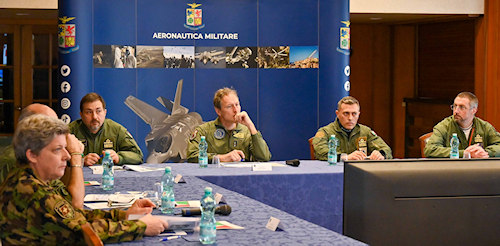 The military airport of Decimomannu, headquarters of experimental and standardization air shooting department (RSSTA), depends hierarchically on the Salto di Quirra Joint Experimental and Training Polygon (Perdasdefogu), and by the Air Force command for the autonomous region of Sardinia (CAMRAS) for oversight and coordination functions with the other AM bodies present on the island. The Alghero airport detachment, the Capo Frasca range, the Serrenti armaments depot section and the weather observation units of Capo Bellavista, Capo Caccia and Capo Carbonara, located outside the Decimomannu airport grounds, depend on the RSSTA commander. The RSSTA coordinates, manages and controls the flight activities of the departments of the Air Force and of the other FF.AA. and Allied Countries, also guaranteeing their logistical/administrative support. It is the home of the 80th center Search and Rescue and the 212GV/IFTS, excellence in the field of advanced flight training, the result of the partnership between the Air Force and the Leonardo company.
The military airport of Decimomannu, headquarters of experimental and standardization air shooting department (RSSTA), depends hierarchically on the Salto di Quirra Joint Experimental and Training Polygon (Perdasdefogu), and by the Air Force command for the autonomous region of Sardinia (CAMRAS) for oversight and coordination functions with the other AM bodies present on the island. The Alghero airport detachment, the Capo Frasca range, the Serrenti armaments depot section and the weather observation units of Capo Bellavista, Capo Caccia and Capo Carbonara, located outside the Decimomannu airport grounds, depend on the RSSTA commander. The RSSTA coordinates, manages and controls the flight activities of the departments of the Air Force and of the other FF.AA. and Allied Countries, also guaranteeing their logistical/administrative support. It is the home of the 80th center Search and Rescue and the 212GV/IFTS, excellence in the field of advanced flight training, the result of the partnership between the Air Force and the Leonardo company.
Il Experimental and Joint Training Polygon of Salto di Quirra (PISQ), established in 1956 and dependent on the logistics command, operates with personnel from the Armed Forces (FF.AA.) and ensures advanced training of the FF.AA. national and foreign, as well as hosting the execution of experimental trials, testing and development of prototype and experimental systems and collaborating with national scientific and university bodies, foreign industrial entities and civil companies operating in the defense and non-defence sectors. It also collaborates with institutional bodies, voluntary associations, civil protection, mountain and speleological rescue, universities and other bodies in order to guarantee training for the ability to jointly manage emergencies and protect the territory and for the synergistic development of emergency projects. dual value in the sector of technological research and development. It encourages the development of collaborations in the space sector with the aerospace district of Sardinia and with the CRS4 (centre for research, development and higher studies in Sardinia). With the sensors located in its territory it is an integral part of the European program for monitoring space debris called Space Surveillance and Tracking (SST). Thanks to the OTI program (Operational Training Infrastructure), stands as a center of excellence for the advanced training of 5th generation flight platforms and for their multi-role integration in increasingly challenging realistic and complex scenarios.
